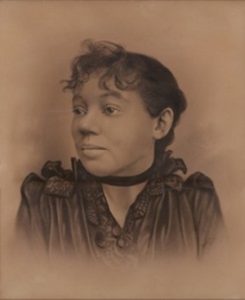
Elizabeth Carter Brooks
*The birth of Elizabeth Carter Brooks is celebrated on this date in 1867. She was a Black educator, social activist, and architect.
Elizabeth Carter was born in New Bedford, Massachusetts. Her mother, Martha Webb, had been a former slave owned by President John Tyler. Webb was involved with the Underground Railroad. Her daughter developed a "passion for equality" for her entire life. She attended New Bedford High School and then went on to the Swain Free School, which provided students with a strong foundation in design and architecture skills. She became the first Black graduate of the Harrington Normal School for Teachers.
Brooks began teaching in the early 1890s at Howard's Orphan Home or Howard Colored Orphan Asylum in Brooklyn, founded and run by African Americans. In 1895, she started working with the National Association of Colored Women's Clubs (NACWC). She became the secretary of the Convention in 1896 and vice-president from 1906 to 1908. She was president of NACWC from 1908 until 1912. Brooks also joined the National Association for the Advancement of Colored People (NAACP) shortly after it was founded and later created her own NAACP chapter in New Bedford. She would be honored as a president emeritus of the New Bedford NAACP in 1948.
Brooks was one of the founders of the New England Federation of Women's Clubs (later the Northeastern Federation of Colored Women's Clubs). She was president for over 27 years and, during her time in the club, "oversaw the sponsorship of community centers, scholarship funds, daycare centers, and other services needed by the community." In 1897, Brooks helped open the New Bedford Home for the Aged, which had several temporary locations at first. In addition, the Women's Loyal Union "assumed the responsibility for maintaining the New Bedford Home for the Aged." Brooks eventually designed the Colonial-style permanent home for its final location at 396 Middle Street.
The Women's Loyal Union, which Brooks was involved with, continued to help support the home at the new location. Brooks became the first president of the home and the Women's Loyal Union and remained in these roles until 1930. The building is still standing in New Bedford and is two and a half stories tall, topped with a hip roof, six dormers, and a front facade with a flat-roofed portico. Brooks began teaching again, this time at the Taylor School in 1901, where she became the first Black teacher in New Bedford. In 1918, she was recruited by the War Council of the National Board of the YWCA to supervise and oversee the building of the Phillis Wheatley YWCA in Washington, D.C.
In 1929, she retired from teaching. That same year, she married W. Sampson Brooks, who was the bishop of the African Methodist Episcopal denomination of the Bethel Church. She and her husband moved to San Antonio, where they lived together until her husband died in 1934. After that, she moved back to New Bedford. In 1939 she began her work on preserving Black heritage. Brooks felt that "monuments to 'race history' were an important part of the African American landscape and deserved to be preserved. She bought the home of William H. Carney and turned the home into a memorial. Elizabeth Brooks was "one of the few Black women of the era who could be considered both architect and patron." After she died in 1951, the city of New Bedford honored her by naming a school after her in 1957.
To Become a Middle School Teacher
To become a High School Teacher